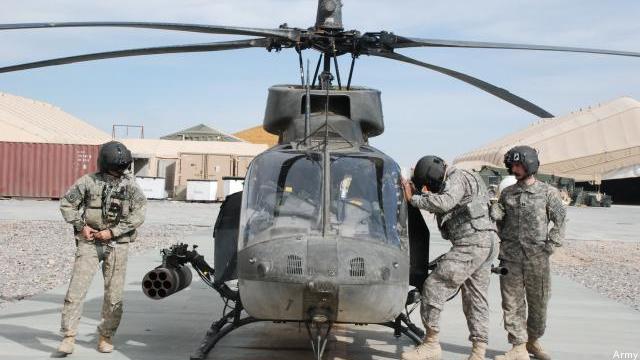 WASHINGTON: If the Army wants to get the Armed Aerial Scout into the fleet — which it wants to badly — it’s gonna have to sacrifice parts of its air portfolio to get there.
WASHINGTON: If the Army wants to get the Armed Aerial Scout into the fleet — which it wants to badly — it’s gonna have to sacrifice parts of its air portfolio to get there.
Federal funding for the Army’s air directorate will likely remain static in the Pentagon’s upcoming budget proposal for fiscal 2012, Maj. Gen Tim Crosby, head of the Army’s program executive office for aviation, said last Friday. That’s no small feat considering the tremendous pressure the department is under to cut costs. While Army aviation will be spared the most of the painful budget cuts in store for the rest of the service, the office won’t be getting any more money either. That could make life a little difficult for service officials looking to get the AAS program off the ground. But the Army does have a plan, Crosby said.
The Army plans to shift dollars from its Kiowa Warrior service life extension program, or SLEP, and move those funds into the Armed Aerial Scout, the two-star general said at last week’s Association of the U.S. Army’s annual aviation symposium. The AAS will replace the Kiowa as the service’s premiere attack reconnaissance helicopter. The Army will have to drop the number of Kiowas it plans to SLEP to pay for AAS development. “That’s the delta” Army aviation leaders are working on now, Crosby said regarding the drop in Kiowa upgrades. But the sooner the service can get the AAS flying, the less upgraded Kiowas it will need in the fleet.
Army aviation leaders plan to hold tryouts for the various defense firms vying for the helicopter deal over the next few weeks, according to Crosby. These tryouts will consist of live-flight “evaluations” of the various helicopters being pitched for the program, he said. The Army got DoD’s blessing to begin evaluating AAS proposals earlier this month, he said. But Crosby was quick to point out these evaluations are not intended to be a “fly-off” to determine which helicopter will become the AAS. Rather, they are just a chance for Army leaders to see what industry has been developing and how far that work as come along.
Currently, none of the current crop of AAS proposals meet the program’s requirements, according to Crosby. That said, service officials may have to lower their expectations on what it expects to get from the AAS. The Army may want the “Lexus version” of its new armed recon helicopter, it may have to be happy with the “Chevy version” of that new helo, Col. Patrick Tierney, director of Army aviation, said at the same AUSA event.
Move over FARA: General Atomics pitching new Gray Eagle version for armed scout mission
General Atomics will also showcase its Mojave demonstrator for the first time during the Army Aviation Association of America conference in Denver, a company spokesman said.


























